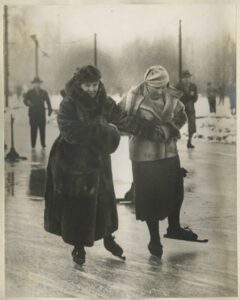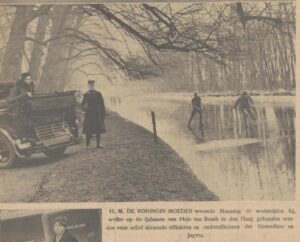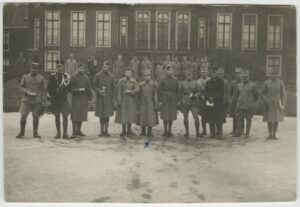In 1986, then-Prince Willem-Alexander successfully completed the Elfstedentocht. Fifteen years later, he proposed to his girlfriend Máxima on the frozen pond in the garden of Huis ten Bosch. You could say that our King’s love of skating is in his royal blood. His grandmother Juliana and great-grandmother Wilhelmina also loved skating.
Wilhelmina
Wilhelmina learned to skate in 1888 when she was eight years old. This was actually done in secret. Her father, King William III, considered this sport ‘unseemly’ for young girls. But her mother, Queen Emma, defied her husband’s wishes and arranged for her daughter to learn to skate without his knowing. In her memoirs, Wilhelmina writes: “How clearly I remember that first time on the little pond in the flower garden, how I dangled there rudderless from the hands of one of father’s aides and then went out onto the big pond behind a sledge. I soon found that I loved skating. Of course, it took me a while to master this sport and I did discover that ice is hard as well as slippery”.
Juliana
In the first months of 1917, it was Juliana’s turn to learn to skate. She was almost eight at the time and made her first strokes on the terrain of the Haagsche Ysclub (as it was spelled in those days) with the help of her mother and a lady-in-waiting. Her mother wrote: “She soon came to love this sport as well and was happy whenever there was an opportunity.”
Royal ice in 1933
On 26 January of that year, when Princess Juliana was 23, she demonstrated her love of skating. Together with two ladies of the royal household, she skated from The Hague to Maassluis (about 26 kilometres). After arriving there, they walked to the market, where a car was waiting to drive them back to The Hague.
That day, her mother stayed closer to home and skated on the wide canal behind Huis ten Bosch Palace. A few days later mother and daughter left for a snow holiday in Switzerland. All these events were reported in the newspapers, including the “News of the Day for the Dutch East Indies”. Even in the tropics, reports about royal ice were apparently considered newsworthy.
Skating competition for the military
Queen Wilhelmina wanted to share her enthusiasm for skating with others, including the military personnel stationed in The Hague. She mentions this in her memoirs: “Later on I went skating, and also organised competitions for the garrison. The frosty spells always brought us a lot of cheer and joy.”
Despite rising temperatures that caused the ice to start thawing, the so-called garrison skating competitions were held on 30 January 1933. The Queen and her daughter had already gone to Switzerland, but there was still royal interest. From an open car, Queen Mother Emma watched the games. Besides Emma, an impressive array of generals and colonels was there as a special audience.
The competitions started in the morning with speed skating over a distance of 300 metres. First the corporals and men competed for the prizes. Then the non-commissioned officers battled it out, followed by speed skating for officers. Grenadier E. Oosting made the fastest run, covering the 300 metres in 34 seconds.
In the afternoon, the competitions in ‘schoonrijden’ were held. This is a traditional Dutch form of skating in which the focus is not on speed, but on graceful, precise movement. The skater moves forward in beautiful large arcs and in a flowing line. Apparently, ‘schoonrijden’ was then considered something for the upper ranks, because these competitions were limited to non-commissioned officers and then for officers.
Immediately after the matches, the Adjutant of H.M. the Queen handed out the prizes, which had been provided by the Queen herself and by her mother. The Adjutant stressed that the Queen was very sorry that she could not attend the matches herself and he thanked the organising committee on her behalf.








